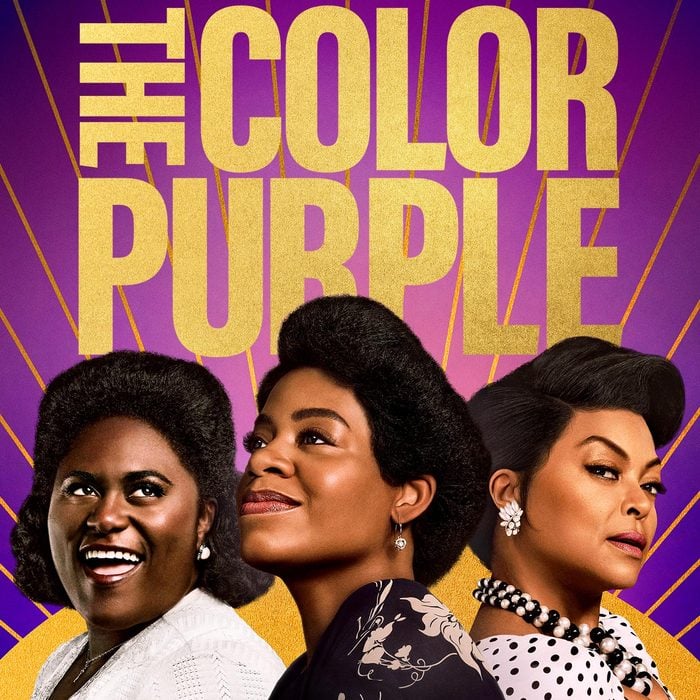The 2023 adaptation of “The Color Purple,” directed by Blitz Bazawule, was released on December 25. With the announcement of the film’s musical portrayal and stars such as Taraji P. Henson and Fantasia Barrino, expectations were high. This past Sunday, January 7th, the film was nominated in two categories at the 81st Golden Globe Awards.
Alice Walker’s addition to American modern literature through her novel, “The Color Purple” inspired two movie adaptations since its publication in 1982. With the buzz stemming from its winning of the 1983 Pulitzer Prize for Fiction, a movie was quickly released in December of 1985. Directed by an influential and major figure in cinema, Steven Spielberg, the cast was comprised of popular actors and celebrities including Whoopi Goldberg and Oprah Winfrey.
Following the initial movie, a musical rendition of “The Color Purple” was created in 2005. Through this rendition, sounds of blues, gospel and jazz were incorporated, allowing the audience to feel further absorbed into the environment of the story. In the songs, the character’s feelings, internal conflicts, and development were more deeply explored and expressed.
The recent movie opens with a scene on the Georgia coast in 1909 in which the audience is quickly introduced to protagonist Celie and her sister Nettie. While their tight-knit relationship is being conveyed, the audience takes in the realistic scenes of Southern life in a small town during the early 20th century.
Like the novel, the movie addresses challenging topics of the time, including forced marriages, sexual violence, racism, alcoholism, religious conflicts and more.
Viewers watch as Celie gives birth to her second child, which her father takes from her immediately. Soon after, her demanding father makes her marry an older and unempathetic man. She is forced to take care of her husband’s children all while being sexually abused and beaten. Her husband does not even tell her his name, having her call him “mister” as a reminder of his power over her.
The importance of religion in the movie is introduced to viewers early into the film with the opening scene comprising of a musical song with gospel influence. The song ends with a young, pregnant Celie being one of few who does not sing as she looks upon the crucifix on the wall. Religion plays an important role in Celie’s life as she faces constant abuse and finds few sources of happiness; thus the title of the film is derived from this theme.
Later in her life, Celie is introduced to famous singer Shug Avery who represents self-love and confidence through her flamboyant personality and dominance over men. While Shug helps Celie find happiness and attempts to convince her to stand up against her husband, she also provides her with insight into her relationship with God. While she was rejected by her father, who as a preacher believed that she chose singing blues over God, she still felt close to her religion. As Celie and Shug walk in a meadow, Shug points out the beauty of the purple flowers. She believes that in appreciating and loving the things God has made, one thus loves God as God is found in everything beautiful. When Celie asks if God truly loves her, since her babies were taken away and she faces abuse, Shug simply explains that those sufferings are from the actions of men and not God.
Throughout the movie, music and labor tie hand-in-hand, following the spiritual, story-telling songs and rhythms of those developed by enslaved men generations before. An example is shown during the early scenes of the movie when the song “Workin’” is performed. This musical performance uses the sound of men building with hammers as the beat and incorporates the “call and response” technique often seen and heard in spiritual songs during slavery.
In addition, the musical influence also helped to counterbalance the violent and uncomfortable topics of the plot through dance breaks and impressive vocal displays.
“The Color Purple,” whether as a novel, musical or movie, tells an important story of perseverance and hope. The 2023 adaptation provides new generations with exposure to Walker’s creation: a valuable novel that aids society’s understanding of the challenges faced during the 20th century.
The new adaptation of “The Color Purple” takes viewers on a powerful musical journey
“The Color Purple” was recently released in theaters starring Taraji P. Henson and Fantasia Barrino.
Story continues below advertisement
Tags:


